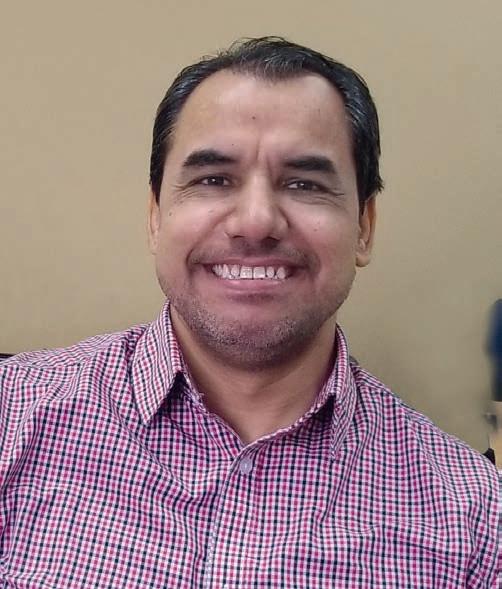
25 minute read
A WORD FROM THE PUBLISHER
PUBLISHER Jacques Boisvert EDITORIALS Gabrielle Brassard-Lecours, Andrée De Serres, Emmanuelle Gril, Johanne Landry and Marie-Hélène Paradis QUALITY CONTROL SUPERVISOR Johanne Landry TRANSLATION, REVISION AND PROOF-READING Neil Kroetsch PRODUCTION Supervision: Edith Lajoie
Graphic design and layout: Carole Bordeleau pour Carbodesign Advertisements: Lan Lephan PHOTOGRAPHS Denis Bernier and Roxane Paquet COVER PAGE PHOTO © Stéphan Poulin ADVERTISING Souk Vongphakdy Sales manager
Montréal Québec 450 670-7770 418 317-0669
ADMINIS TRATION Edith Lajoie Operations and Customer Experience Manager
ACCOUNTING Catherine Faucher Philippe Bérubé CPA
PUBLICATIONS POST Agreement n o PP 41614528
RETURN ADDRESS 2120 Victoria Avenue, suite 140 Longueuil (Greenfield Park) QC J4V 1M9 SUBSCRIPTIONS abonnement@jbcmedia.ca www.jbcmedia.ca
Legal deposits — Library and Archives Canada and Bibliothèque et Archives nationales du Québec, 2009
All requests for copies must be made in writing to the publisher. If your request is accepted, it must clearly indicate the source, as follows: From Villes d’avenir, Montréal Economic Powerhouse Edition. The name of the author or photographer must also appear.
Please note that this magazine appears seasonally. Publication dates subject to change.
ISSN 2293-8362
Villes d’avenir, Montréal Economic Powerhouse Edition is published by JBC Média inc. President : Jacques Boisvert
2120 Victoria Ave., suite 140 Longueuil (Greenfield Park) QC J4V 1M9
Telephone: 450 670-7770 Toll free: 1 866 446-3185 Fax: 450 670-7771 info@jbcmedia.ca
www.jbcmedia.ca
A EUROPEAN CITY IN AMERICA
jacques.boisvert@jbcmedia.ca
In terms of its economy, the next few years look to be particularly promising for Montréal. But beyond the figures and statistics, I am convinced that the city will retain its unique style and signature as a great place to live, study, work, raise a family and to party. A human scale city that is multicultural and open to the world, Montréal is more than ever a European city right here in America!
This 2020 edition of Montréal Economic Powerhouse shines the spotlight on the eastern districts of the city where the land available for development and a nearby labour force offer significant potential for economic growth. To explore the matter further, our journalist Johanne Landry met with the mayor of the Rivière-des-Prairies–Pointe-aux-Trembles borough, who is also the economic development consultant for the district and the director of the city’s Economic Development Service.
With its four universities and other institutions of higher education, Montréal is a city of knowledge. It was thus a natural step for Mayor Valérie Plante’s administration to forge closer links with the educational milieu, a gesture that led to the establishment of three areas of intervention and to several projects pursued in partnership with educational institutions. Our journalist Gabrielle Brassard-Lecours provides details in this issue.
You will also find other articles of great interest in this issue: real estate and labour mobility to ensure sustainable, inclusive development; the Greater Montréal delegation promoting the city at MIPIM; real estate opportunities for foreign investors; and integrating immigrants into the workforce, to name a few. The themes addressed reflect the reality and challenges that Montréal must confront in order to remain a welcoming and economically prosperous city.
Enjoy your reading!
Jacques Boisvert Publisher

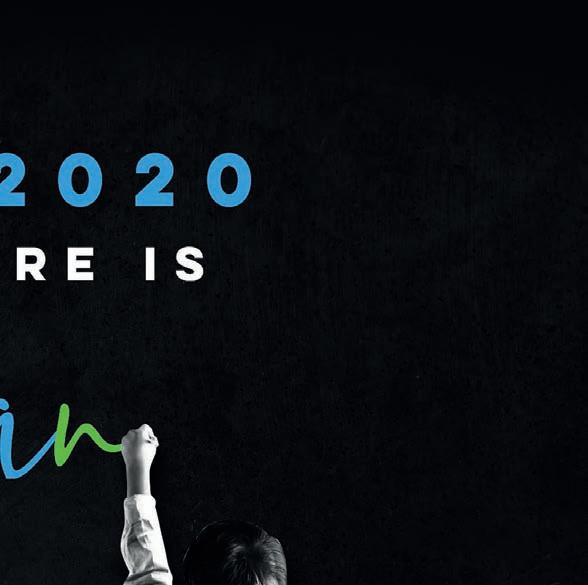
10-13 MARCH 2020 PALAIS DES FESTIVALS - CANNES, FRANCE


THE WORLD’S LEADING PROPERTY MARKET


26,800 real estate professionals 100+ countries 22,000 sqm exhibition area 6,380 investors 130+ conferences
MONTRÉAL EAST A NEW LOOK
BY JOHANNE LANDRY, JOURNALIST

With land available for development and access to a large labour pool, trailblazers at the eastern end of Montréal Island want to exploit its potential for economic growth. M ontréal East is a sector where the stars are currently aligned for success, according to Caroline Bourgeois, mayor of the Rivièredes-Prairies–Pointe-aux-Trembles (RDP/PAT) borough and the economic development consultant for the district. Key players are mobilized, ranging from the City of Montréal and the provincial government to institutions, organizations, chambers of commerce and regular citizens, all of them working toward a common goal – kickstarting the area’s enormous potential.
LOTS OF MANPOWER AND VACANT SPACE Extending from Pie-IX Boulevard to the eastern tip of the island, the sector counts some 20 million square feet of land available for development projects. Additional lots are yet to be decontaminated, but the process is well underway. The Québec Government is contributing $100M, and has earmarked an additional equivalent amount in its budget.
"The land formerly occupied by the Esso oil refinery, for example, amounts to 10 million square feet," said Caroline Bourgeois. Groupe C. Laganière recently acquired 228 acres previously owned by Shell Canada in order to carry out the necessary decontamination and site restoration work.
The 119 km 2 of the eastern part of the island is home to more than 12,000 firms and some 600,000 residents. "Many residential sectors are located close to employment zones, so there is a significant pool of manpower available," she added.
There is existing economic activity with more under development, plus substantial capacity to welcome many more firms. What persists, however, is a negative image linked to its industrial past. Thus the focus on repositioning and creating a new identity. The objective is to attract not only nearby businesses, but also green or sustainable chemistry firms and companies working in the circular economy .
"We have a lot of green space here and a good quality of life," said Ms. Bourgeois, who has always lived in the area. "Many sectors are near the banks of the St. Lawrence River or Rivière des Prairies, and people thus have exceptional access to waterways in an urban milieu."
FLUID TRANSPORTATION The area is crisscrossed by major highways that facilitate transport, an important asset. Nonetheless, there are issues regarding the mobility of labour. The 2018 revitalization plan for the eastern parts of Montréal Island signed by the municipal and provincial governments calls for solutions such as a tramway linking Pointe-aux-Trembles to downtown
CITY OF MONTRÉAL
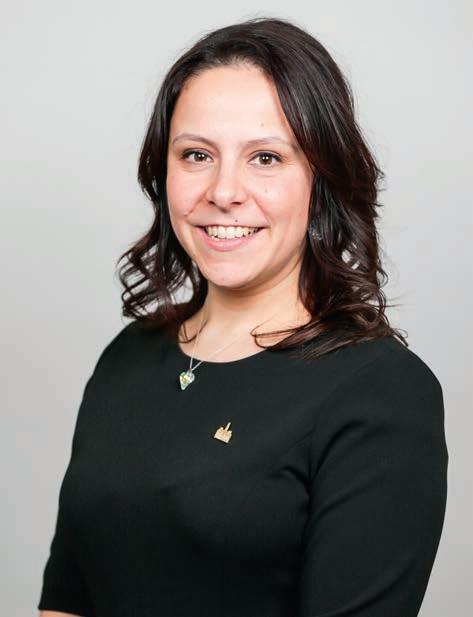
CAROLINE BOURGEOIS Mayor of the Rivière-des-Prairies–Pointe-aux-Trembles (RDP/PAT) borough and the economic development consultant for the district
Montréal along the Notre-Dame Street axis. How is that project coming along? "La Caisse de dépôt et placement was given the mandate to study modes of transport to improve labour mobility and is working on it as a priority," replied the mayor.
There is a river shuttle service during the summer months (June to September), a 3-year pilot project that, in her opinion, has been a success. "Workers who live in the eastern end of the island can get downtown in 30 minutes, compared to an hour or more by road. Downtowners also come out to discover this end of the island. It is a much appreciated service."
There is also the extension of the subway’s Blue Line, with five new stations being added in the Anjou borough. The extension is scheduled to be up and running by 2026.
Jobs Quality of life Greening Sustainable mobility








The East End Geared Up for Tomorrow
Montréal is accelerating the economic development of its territories as part of the joint declaration made by the government of Québec and the city to revitalize the East End of Montréal.






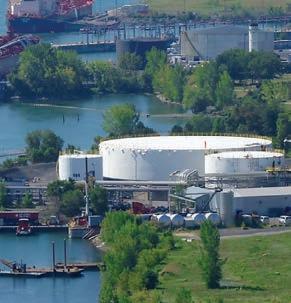



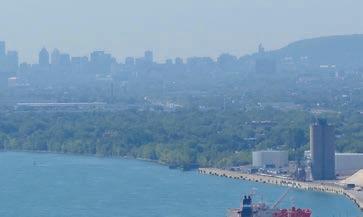




ville.montreal.qc.ca/gearuptheeast
"We are also working in conjunction with the Société de transport de Montréal for a better structured bus service, as well as bicycle paths to ease transit for workers," said Véronique Doucet, Director of Economic Development for the City of Montréal.
While these mass transit projects will eventually mean fewer cars on the road, congestion is nonetheless a problem across Montréal, including its eastern sectors. Ms. Doucet noted that congestionrelated costs amount to some $4.2G, according to recent statistics. "We are tackling the issue head on, with numerous actions taken to resolve these problems. Montréal East is strategically positioned. The Port of Montréal is the largest port in eastern Canada and thus a transportation corridor and a trans-shipment hub. We need to optimize that logistics corridor and upgrade its performance."
The pilot project to turn Îlot Voyageur in downtown Montréal into a cargo distribution hub is one example. Trucks unload merchandise there, and the goods are then delivered by smaller zeroemission vehicles and cargo bikes. "The idea," noted Véronique Doucet, "is to bring the cargo to Montréal and then link together a distribution network that has a much smaller carbon footprint. We are living in a transformative period. E-commerce generates a lot of truck travel, but often trucks are not loaded to full capacity. Getting businesses to share transportation and thus make better use of vehicles is an avenue we are exploring."
TALENT AND KNOW-HOW Recognized as a city of knowledge, given its 11 higher education institutions, Montréal’s colleges, universities and research centres are indeed a strong asset. Its Reinventing Cities plan actively involves universities and academia to help address the challenges faced by Montréal East.
A major goal is to attract institutes of higher education to the borough and to offer a wide range of programs. "An important issue here is our low education levels, a situation we are anxious to improve. We want to offer skills and training suited to the needs of local employers. All universities and
VÉRONIQUE DOUCET Director of Economic Development City of Montréal

CITY OF MONTRÉAL
colleges are currently studying how to adapt our existing system of education, teaching and research so as to give it fresh impetus and accelerate the borough’s development," said Véronique Doucet.
"Establishing a close, intense and concrete relationship between higher education and economic development is a first in the history of the city," she added. "We view development in Montréal East as a social project, the mobilization of different sectors all working toward the same goal and thus rejuvenating the region."
ISO 14001 CERTIFICATION Several meetings with citizens and organizations were held to discuss the orientations proposed by the City for the Assomption Sud–Longue-Pointe
GETTY IMAGES BY MIRCEAX

sector that would attract new businesses, while also promoting sustainable development. The Public Consultation Office was drafting – at the time of writing – its report on the best ways of harmoniously developing this sector, which is bounded by Souligny Avenue, the Port of Montréal, the Longue-Pointe railway marshalling yard and Highway 25.
"An industrial ecopark is an interesting project," noted Ms. Doucet. "We want to obtain ISO 14001 certification for an industrial area, which would be a first in North America. It is already an active employment sector, and there is vacant land to be developed in line with a vision that encourages the cohabitation of residential and industrial zones." Another proposal is to construct a road link, an overpass across Notre Dame Street linking the Port of Montréal and Assomption Boulevard.
"Generally speaking, the industrial parks of the 1950s and 1960s faced the problem of attracting and retaining staff in an area with a poor quality of life. Our vision of sustainable development is to ensure that firms that set up shop here have an environmental consciousness. It’s important for employees, and also for our view of the future development of Montréal East. We want to turn the perception of our historical petrochemical liability on its head," she insisted. Caroline Bourgeois added that "New industries have started to switch to an economy that is more focused on green chemistry and the diversification of activities."
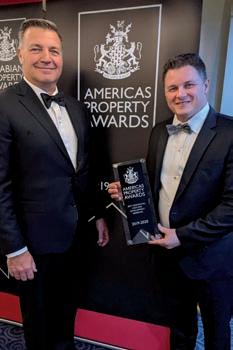



MONTRÉAL, CITY OF INNOVATIVE PROJECTS
BY MARIE-HÉLÈNE PARADIS, JOURNALIST
Municipal leaders are actively planning the city’s current and future growth, emphasizing sustainable development and quality of life. "From a real estate standpoint, Montréal has an enviable situation. What attracts firms to set up shop here are the city’s parks and green spaces and its public transit systems, soon to be augmented by a tramway and a new subway line," said Robert Beaudry, member of the executive committee and responsible for housing, real estate strategy, large parks and Jean-Drapeau park.
Montréal enjoys a healthy economic climate as well as an excellent reputation, positioning the city quite favourably in the real estate market. "Montréal has a number of advantages compared to other North American cities, such as its concentration of talent, its downtown universities, very dynamic colleges and technical institutes, and strong position in high-tech sectors such as artificial intelligence and big data. The city also stands out because it is affordable, has a skilled labour force and reasonably priced premises for sale or rent, and also has its own special energy and land available for future project development," he noted. There are many new projects being developed in the downtown core and other neighbourhoods, but does all that new construction respect the vision of civic leaders and their desire for sustainable development?
According to Mr. Beaudry, when planning a station for the commuter train system Réseau express métropolitain (REM), a tramway for a particular neighbourhood, a BIXI bike rental site or a subway station, the emphasis is on TOD (Transit-Oriented Development). The mass transit sector must be accessible and developed to maximum density so that citizens enjoy a quality of life that reflects the municipal administration’s vision of current and future development. Montréal thus becomes fertile terrain for innovative projects.
AN INNOVATIVE, INTELLIGENT MANUFACTURING DISTRICT One project that the city wants to develop, with a focus on accessibility and quality of life, is the upcoming Innovative, Intelligent Manufacturing District (QIMI), to be built on the site of the former NFB studios in Ville St. Laurent. Well situated near major highways and with easy access to the airport and close to a subway station, it will also be connected to the upcoming REM commuter train A40 station. The site is an ideal
CITY OF MONTRÉAL

ROBERT BEAUDRY Member of the executive committee and responsible for housing, real estate strategy, large parks and Jean-Drapeau park City of Montréal
candidate for a building redevelopment project and for QIMI innovative manufacturing. It is an industrial sector, but with its enclosed neighbourhood it is also a living environment. It has all the components necessary for transit oriented development, and could thus grow in such a way as to create an environment that is efficient for businesses and pleasant for citizens. "With a good concentration of diverse manufacturing, food processing and textile industries, small, medium-size and large firms will benefit from easy road access. We are committed to making that district a living environment as well as
a place for industrial development. We submitted a proposal to the federal government to upgrade the former NFB site, which totals 200,000 square feet. We are still in the initial planning stages, but there is a lot of interest and private partners are getting on board," said Mr. Beaudry, adding that the city wants to make QIMI a showcase, a model for innovative manufacturers, as well as an integrated neighbourhood.
The district will attract Industry 4.0 firms, more efficient, less wasteful factories with smart machines fuelled by data and machine learning. Theirs will be a much more understated presence than factories of old. "We want to renovate and upgrade the NFB building, and to include a centre for innovation and commercialization that will become a showcase for all sorts of automated manufacturing innovations. We’re a little behind in this area, as there is no place to share expertise or to experiment with certain new technologies. We want to pool resources so that smaller firms with no means of purchasing cutting edge automated manufacturing systems can also benefit from these new approaches," he added.
EXEMPLARY RENEWAL Redevelopment will also give the district a new lease on life. "We have to face economic and social issues head-on. We are discussing the possibility of adding affordable housing and subsidized apartments to the neighbourhood’s current housing stock. We must also offer services such as schools, community centres and other elements required for the smooth functioning of a neighbourhood. How can we offer citizens an attractive ambience and amenities, and thus ease the transition to the new model? That is our focus, to upgrade an industrial sector so that it can transition toward an environmentally responsible approach based on sustainable development. Montréal is a dynamic city, a great place to live, but it is also a transportation hub with direct access to 50% of the world population via its highways, rail system and airport. It also has a very interesting employment pool for import-export firms."
OTHER DISTRICTS WITH REDEVELOPMENT POTENTIAL City authorities are considering other districts ripe for renewal, and the city’s east end is in their sights. In partnership with the Government of Québec, consultations will take place about rejuvenating areas like the east-end Assomption Sud industrial sector. "We want to make changes based on higher standards for sustainable development and ecological transition, as there are some serious problems to address," he concluded.

REAL ESTATE OPPORTUNITIES

MONTRÉAL ON INVESTORS’ RADAR
BY MARIE-HÉLÈNE PARADIS, JOURNALIST
Montréal enjoys an enviable reputation for its quality of life. It’s a great place to live, but what are the other factors that make the city attractive to foreign investors? To get an answer to that question, we interviewed three business leaders in Montréal’s property development industry. Regardless of their areas of expertise, the conclusion is the same: the ongoing economic growth of Montréal attracts investors. est Countries Ranking 2019 not only confirmed the fact that Canada is the top country in the world for quality of life, but also that Montréal is the top city in the country in the field of education, due to its world renowned universities and colleges. The stars are thus aligned to make Montréal an unbeatable choice for discerning investors. Québec offers laudable political and economic stability, social equilibrium, an unemployment figure that is at its lowest rate in 40 years and low energy costs, in addition to having a rich, diverse cultural life. The many festivals, top-notch restaurants and also the fact that Montréal is a safe and secure city make it an exceptional candidate in a competitive market. B

According to Avi Krispine, Québec managing director of CBRE, the biggest commercial real estate agency in the world, the figures speak for themselves. "In the first half of 2019, real estate investments in Montréal reached a level never previously seen. We are about to shatter the 2018 record, which was $6.2 billion, or $3.6 billion for a six-month period. The average over the past five years was $2.2 billion for six months. That is a phenomenal growth rate of 63.6%."
AVI KRISPINE Québec managing director CBRE
CBRE
2020 CONVENTION THE ENVIRONMENT OF TOMORROW IS NOW
REDEFINING OUR INDUSTRIAL PARKS : VITALITY RHYMES WITH SUSTAINABILITY !
May 20 to May 22 Palais des congrès de Montréal umq.qc.ca/assises-annuelles
A HOW-TO WORKSHOP MAY 21, 2020 2:30 PM
SYLVAIN LECLAIR Executive vice-president for Québec Groupe Altus

GROUPE ALTUS
FONDS IMMOBILIER DE SOLIDARITÉ FTQ
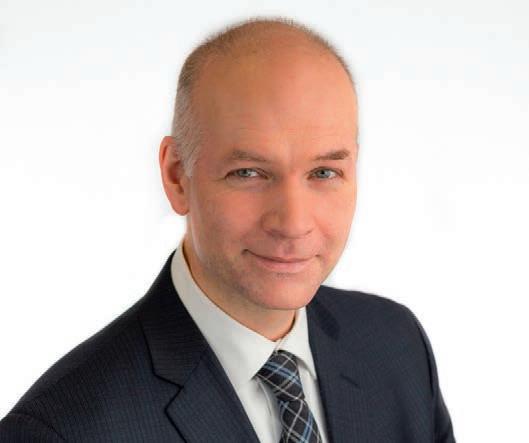
RÉMI COUTURE Financial analyst Fonds immobilier de solidarité FTQ
Studies of different real estate markets conducted by the Altus Group, a provider of advisory services and data solutions, also confirm that the Montréal market is burgeoning. "Economic indicators are trending higher, and Montréal is one of the top-performing cities in Canada. It is very attractive to people looking to obtain an interesting return on their investment," said Sylvain Leclair, executive vice-president for Québec.
IDEAL CONDITIONS There are many indicators that determine how attractive a market is for investors, the main ones being the economy and the labour force. How does Montréal stand out in the eyes of real estate investors?
Rémi Couture, a financial analyst for the pension fund Fonds immobilier de solidarité FTQ, also notes that the economy is doing well, particularly in many high-tech sectors. "Several new sectors are performing well, from artificial intelligence to video gaming and the service economy. There is an economic and demographic dynamism in Montréal at present and, compared to other Canadian cities, it is a more affordable city. Investing in Vancouver and Toronto has become quite costly and capitalization rates are low, whereas in Montréal, even though rates are low they appear moderate because the cost of labour is lower than in Toronto or Vancouver, and rental costs are very reasonable. Conditions are thus favourable for investing and getting a good rate of return on your capital outlay. That is not the case in other Canadian provinces where things have tailed off."
In addition to economic indicators, which speak for them selves, another factor that is very important for investors is the quality and availability of the labour force – its training, skills and cost – and there Montréal is in a very favourable position, as a CBRE study indicated. "Our workforce has a good reputation. The only challenge is finding talented workers outside Montréal who speak both French and English. Montréal’s universities and technical colleges have an international reputation. There is a lot of talent; it’s an embarrassment of riches," noted Mr. Krispine. Québec is renowned for workers and students who are well versed in high-tech, a sector that is becoming increasingly important and is of strong interest. Montréal is a French-speaking city but its workers also speak English, which is a plus. Carole Handfield, vicepresident, Investments at Fonds immobilier de solidarité FTQ, added that "Another advantage of Montréal we don’t often think about is that it is completely bilingual. Everyone at the table can converse with foreign investors, which is a very positive asset."

GETTY IMAGES BY VLADONE

In Québec in recent years there have been substantial investments in infrastructure. All stakeholders agree that the low benchmark interest rate and government investments in infrastructure are reassuring, and are an additional factor in making Montréal attractive to investors. The Réseau express métropolitain (REM) commuter train network now under construction is the most important transportation infrastructure after the subway. "When investments in public transit are visible, as is the case with work on the new REM network, investors see many opportunities for development. Those investments instill confidence," said Rémi Couture. Ms. Handfield added that "development projects like the REM have positive impacts on the urban lifestyle. We seek to create a diverse social mix, outstanding living environments and mobility when developing real estate projects." Mr. Couture notes that Montréal is also a natural logistics hub for North America. It has a port, an airport and several train stations. For the import-export industry, it provides exceptional access to the north-eastern U.S., as well as the American Midwest.
A CONSTANTLY EVOLVING MARKET It goes without saying that the Montréal market is expanding because of the city’s vigorous economic growth. The net vacancy rate for office and commercial rentals, which is much lower in Montréal than elsewhere in Canada, also attracts investors. Compared to other Canadian cities, Montréal stands out when the time comes to rent office space. Avi Krispine has seen its impact. "In Toronto and Vancouver, our competitors in Canada, it costs more than $40 per square foot to rent downtown office space. In Montréal it costs between 9 and 36.8% less than in those two cities. Renting industrial space in Toronto is 28% higher and in Vancouver 52% higher than it is here. There has been a 28.7% increase in office space for sale in Montréal, and sales of retail space have risen by 30.5%. On the other hand, there is a scarcity of land and industrial product for sale in the current market."
Sylvain Leclair notes that despite what one might think, the multi-residential market is not saturated and is doing well. Its very acceptable vacancy rate of 2% does not reflect an oversupply.
At the national level Vancouver, Toronto and Calgary have for a long time captured the lion’s share of investments, but now Montréal is part of the privileged group of sought-after cities, observed
FONDS IMMOBILIER DE SOLIDARITÉ FTQ

CAROLE HANDFIELD Vice-president, Investments Fonds immobilier de solidarité FTQ
Sylvain Leclair. "The scarcity of available land, rising rents and higher construction costs due to a shortage of skilled personnel, all those are factors also taken into account, but on the whole the value of investments is increasing significantly." He added that "as soon as a property comes onto the market, be it office, multi-residential or indus trial space, the yield is impressive. There used to be little activity in the industrial market. Even if industrial product was available, it was considered as a second or third category product. Now it is a highly rated sector. The vacancy rate has dropped by half, rents have increased and there is potential for a very interesting return for investors. Even the hotel sector is on the upswing. Those experiencing the most difficulty, such as retail businesses, are repositioning. We are looking, for example, at building condos or residences for senior citizens that incorporate retail businesses and thus create added value, but it means greater risk for investors seeking high yields."
As regards a higher return on investment, key considerations are the constantly rising costs of buying or renting plus low availability, and thus their influence on the market. "There is indeed pressure but it is the local market creating that pressure, not foreign investors," said Jacinthe Lachapelle, head of the research team and a sales analyst at CBRE.
When investment conditions are good, capital remains available – pension funds, private investment funds, lenders – those with money to invest. That creates a slightly overheated market but also generates a lot of interest. Moreover, foreign investors face no barriers or restraints in Montréal, compared to the Vancouver and Toronto markets. Unlike those two cities, Québec does not impose a tax on foreign buyers to make the housing market more affordable for local residents given that, for the moment, Montréal is not an overheated market.
Whether investors come from Canada, the United States, Europe, Germany, Korea or Saudi Arabia, the market is opening up more and more, notes Avi Krispine. That phenomenon prompted Carole Handfield’s observation that "foreign investors are now knocking on the doors of the Fonds immobilier de solidarité FTQ. While many investors now come from Ontario and France, the German and Swedish markets are also considering investing in Montréal. Ours is a safe city to live in, has a very attractive urban lifestyle and, in Montréal, the living is easy."

JACINTHE LACHAPELLE Head of the research team and a sales analyst CBRE

According to experts at the International Monetary Fund and a report it published in 2018, Montréal’s openness and the global synchronicity of its progress are symptoms of an increasingly open financial sector and an increasingly integrated world. Globalization has thus had an impact on this economic sector. Montréal is not the only city to benefit from this state of affairs, but its intrinsic qualities make it an exceptional and highly competitive candidate that is only now beginning to be recognized as such. "The Québec economy has not been this vigorous in at least 30 years, and I have the impression that it will continue, which means that interest in Montréal real estate properties will also continue. Montréal has a lot of potential. The interest is there, and it won’t disappear," stated Sylvain Leclair. Montréal is a sound investment, with a constantly evolving market, coupled with a dynamic economy and a skilled workforce. It will continue to attract investors.



